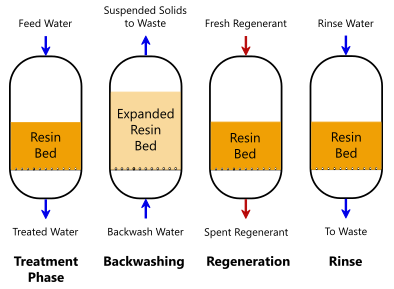The Role of PFAS Treatment in Cleaning Contaminated Water
Cutting-edge PFAS Treatment Solutions for Safer Water
The enhancing prevalence of PFAS contamination in water supplies requires a critical exam of ingenious therapy options. Advanced filtration innovations and unique chemical treatments existing promising opportunities for reducing these consistent pollutants. Furthermore, arising bioremediation techniques use a more sustainable strategy to dealing with PFAS challenges. As regulative structures continue to adjust, understanding the performance and scalability of these services comes to be vital. What implications do these innovations hold for public health and wellness and ecological remediation, and just how can stakeholders successfully execute them in varied contexts?
Summary of PFAS Contamination
PFAS contamination has arised as a substantial ecological and public wellness concern. Per- and polyfluoroalkyl substances (PFAS) are a group of synthetic chemicals understood for their determination in the setting and body, leading them to be frequently described as "for life chemicals." These substances have actually been commonly utilized in numerous sectors, consisting of firefighting foams, water-repellent textiles, and food product packaging, largely due to their water- and grease-resistant properties.
The widespread use of PFAS has led to their detection in soil, water supplies, and even in the blood of humans and pets. Researches have linked PFAS direct exposure to countless wellness concerns, consisting of developing impacts in infants, immune system dysfunction, and different forms of cancer cells. In addition, the ecological determination of these compounds complicates their deterioration and removal, increasing issues regarding long-term ecological effects.
Regulative bodies are progressively carrying out rigid standards to check and reduce PFAS levels in alcohol consumption water and various other ecological mediums. As understanding of PFAS contamination grows, it has ended up being necessary for communities and industries to seek effective treatment solutions to mitigate exposure and safeguard public health.
Advanced Purification Technologies
As the seriousness to attend to PFAS contamination heightens, advanced filtration technologies have actually become an essential element in the removal efforts targeted at removing these relentless chemicals from water resources. These modern technologies utilize sophisticated devices to efficiently target and record PFAS compounds, which are notoriously immune to standard treatment techniques.
Among the most promising methods is making use of granular triggered carbon (GAC), which adsorbs PFAS particles as a result of its high area and porous framework. This approach has been widely carried out in both metropolitan and industrial settings, showing substantial reductions in PFAS concentrations. In addition, ion exchange materials have gained traction, particularly developed to uniquely bind PFAS ions from water, hence facilitating their removal.
Membrane layer purification technologies, such as reverse osmosis and nanofiltration, also show effectiveness in PFAS elimination by literally separating impurities from water - pfas management. These systems can attain high degrees of pureness, making them ideal for alcohol consumption water applications
Chemical Therapy Developments
Many chemical therapy advancements are being checked out to properly resolve PFAS contamination in water supplies. One promising approach involves the use of sophisticated oxidation procedures (AOPs), which use powerful oxidants such as ozone, hydrogen peroxide, or chlorine dioxide combined with UV light to break down PFAS compounds right into much less harmful materials. This approach has actually demonstrated effectiveness in lab settings, showing possible for scalability in real-world applications.
An additional ingenious method is the advancement of ion-exchange resins specifically designed to target PFAS. These resins can uniquely adsorb PFAS substances from water, enabling their elimination throughout treatment processes. Recent advancements have boosted the performance and ability of these materials, making them a favorable option for water therapy centers.
In addition, scientists are exploring using chemical agents like persulfate and ferrous ions to linked here enhance the deterioration of PFAS in infected water. These representatives can generate chain reaction that promote the malfunction of consistent PFAS compounds.
Emerging Bioremediation Strategies
Current improvements in chemical therapy developments have actually paved the method for exploring bioremediation methods as a feasible option for dealing with PFAS contamination. Bioremediation harnesses the all-natural metabolic procedures of bacteria to break down or change contaminants, making it an appealing approach for tackling persistent contaminants like PFAS.
Emerging strategies in bioremediation include using genetically crafted microorganisms that can particularly target and damage down PFAS compounds. These microbial stress are being created for their enhanced destruction capabilities, boosting the efficiency of the removal process. Additionally, scientists are examining the possibility of plant-assisted bioremediation, where specific plant species might uptake and withdraw PFAS from polluted soil and water.
One more promising method is the application of bioaugmentation, which involves introducing useful microbes right into contaminated environments to boost the degradation of PFAS. This method can assist in quicker remediation timelines and boost general effectiveness.

Governing Structures and Standards
An extensive regulative structure is crucial for effectively managing PFAS contamination and making sure public wellness protection. The increasing recognition of per- and polyfluoroalkyl compounds (PFAS) as toxic wastes has actually triggered different federal and state companies to establish criteria that regulate their existence in water materials. The United State Epa (EPA) has actually established health and wellness advisories and is pursuing establishing enforceable restrictions for PFAS in alcohol consumption water.
State-level policies differ considerably, with some states taking on stricter standards than those proposed by the EPA. These laws often include optimum pollutant degrees (MCLs) for particular PFAS compounds, tracking needs, and reporting responsibilities for water utilities. Additionally, emerging frameworks concentrate on the removal of contaminated websites, stressing the demand for efficient treatment technologies.

Conclusion
In verdict, the advancement and execution of ingenious PFAS therapy solutions are crucial for attending to the prevalent concern of water contamination. Advanced purification innovations, chemical treatments, and emerging bioremediation techniques jointly offer a complex method to properly minimize and deteriorate PFAS levels. As regulatory frameworks proceed to develop, incorporating these innovations will be necessary Continue to secure public health and recover the stability of infected water sources, inevitably contributing to a cleaner and safer setting.